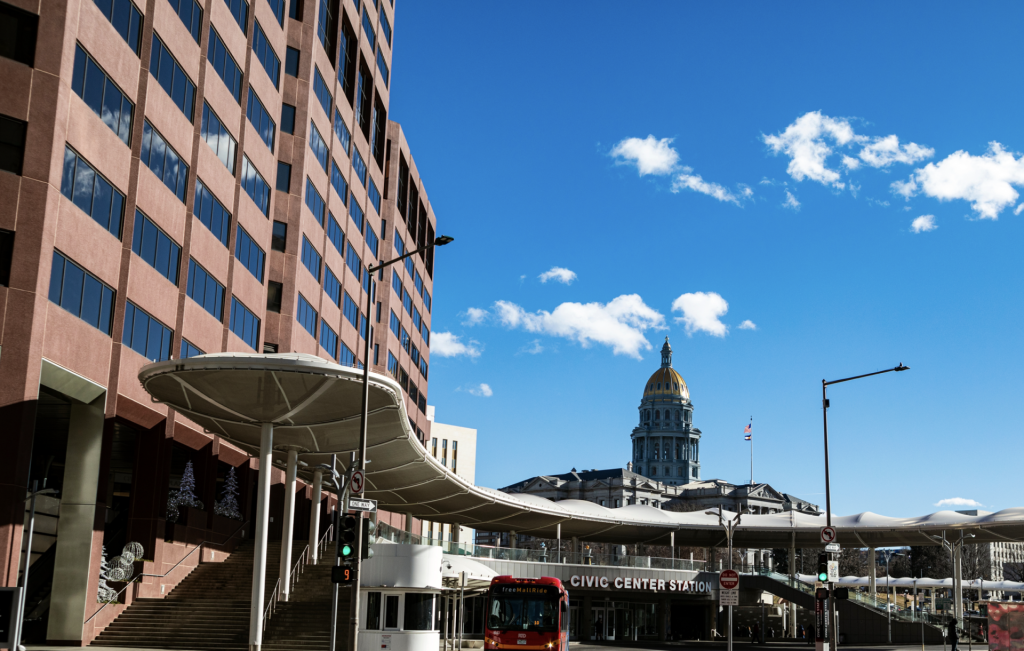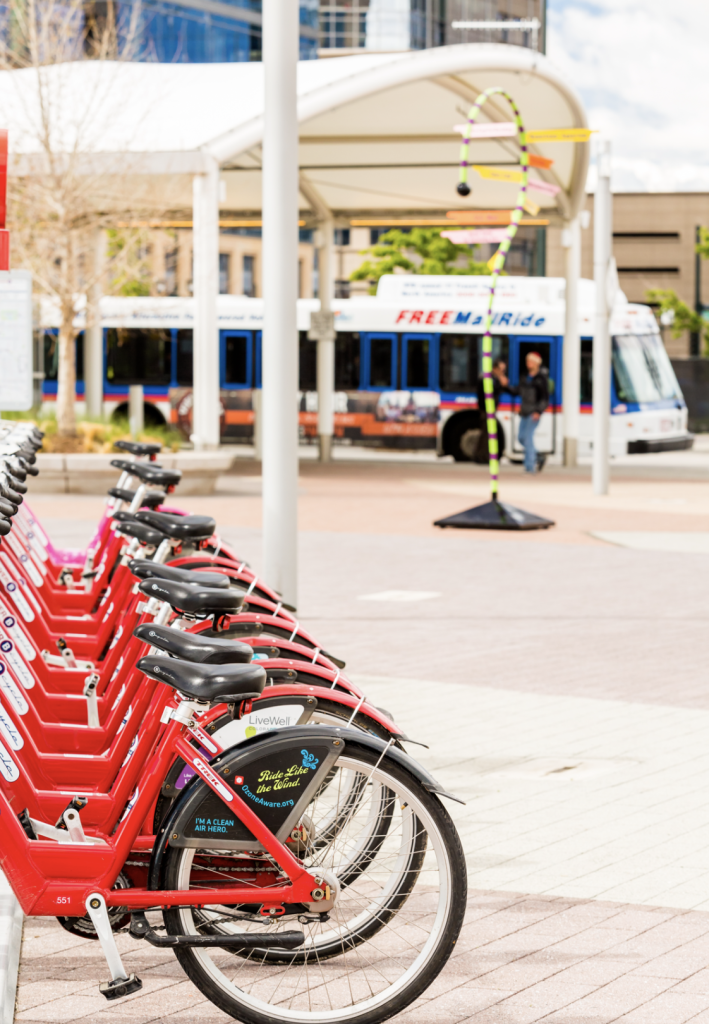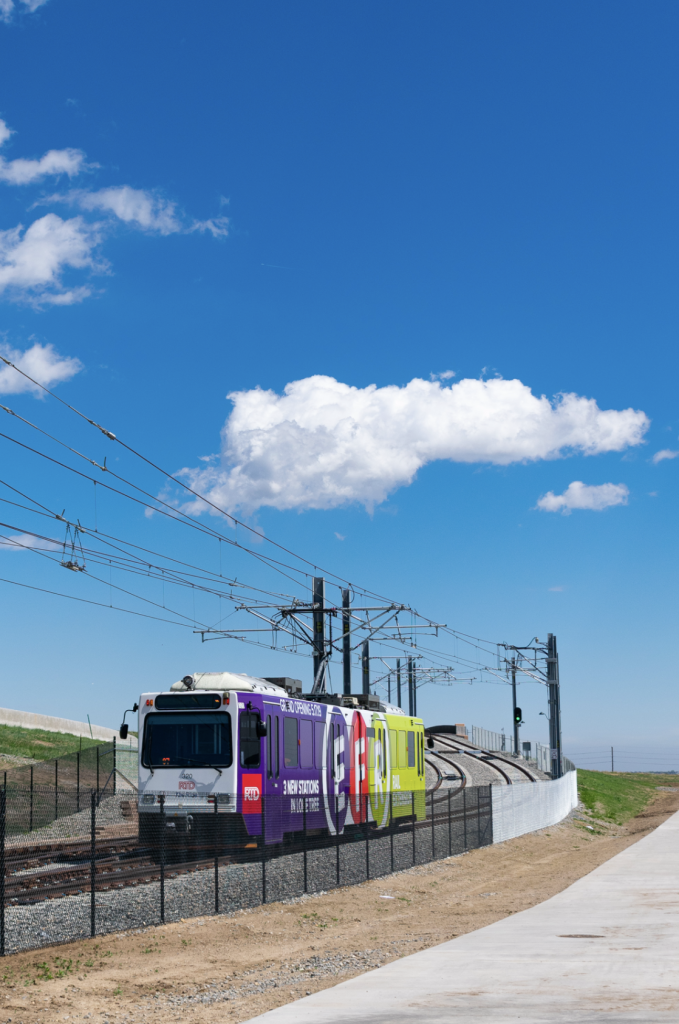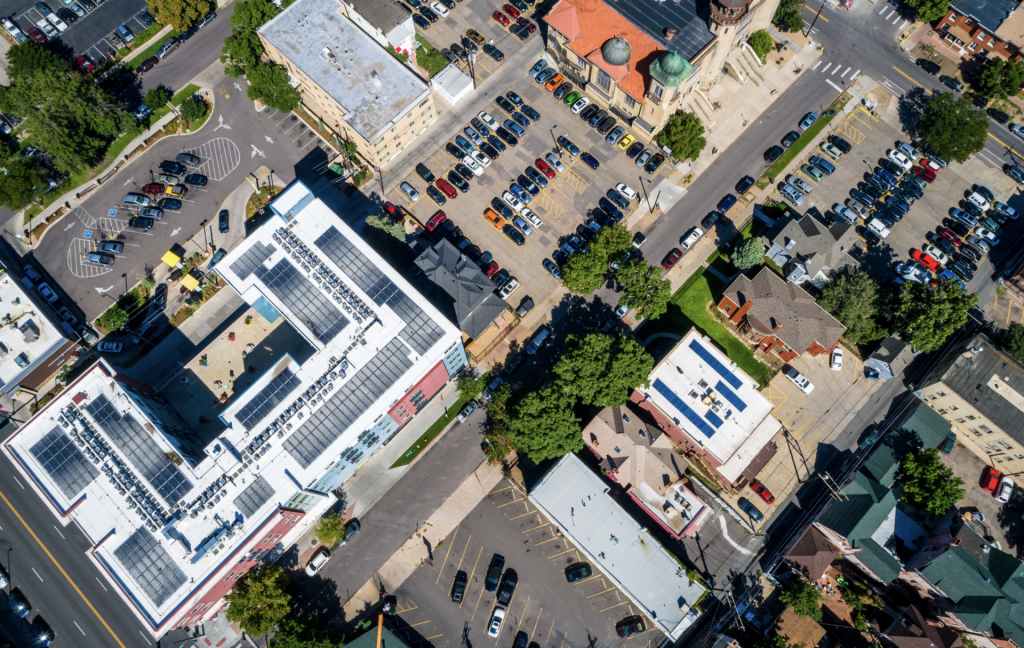In a new year when sustainability is a hotly debated topic, Denver ranks as a city where that’s long been a priority
By Mark Samuelson
Coloradans, with some of the prettiest surroundings in the world and lots to lose as a consequence of environmental damage, have long been leaders in reaching for renewable energy and environmental sustainability.

Forty-eight years ago, metro Denver was chosen as the site for the Solar Energy Research Institute (SERI), renamed the National Renewable Energy Laboratory in 1991. Well before that, the National Center for Atmospheric Research perched beside the Flatirons in Boulder was one of many science facilities here that lured researchers fascinated by solar, wind power and other energy technologies.
Back in the 1950s, scientists were already talking about greenhouse gases from fossil fuel use—carbon dioxide and other emissions—that could trap solar heat in the atmosphere, throwing off the planet’s natural balance of heating inputs and outputs. Many factors contribute to carbon footprint, but according to the EPA, the largest source of greenhouse gas emissions from human activities in the U.S. comes from burning fossil fuels for electricity and heating at home, plus transportation.
Efforts to better our greenness as a city (and state) break into two categories based on those findings: building performance of homes, offices and commercial centers and transportation factors like personal and business vehicle use.
Starting at Home
By the time SERI opened in 1978, Denver was showing off homes designed to use passive solar energy, often built by those same researchers.
That grew into a sensation in 1980 when more than 100,000 Coloradans turned out to see 12 solar houses, all by different Denver builders. Suddenly, collections of homes with green technologies packaged into their design were sprouting around town, sparking a trend that carried over into the national building industry.
Well before the new governmental initiatives, Denver’s building industry was headed in that direction in the early 1980s, when John Avenson, an engineer at Bell Labs in Westminster, was one of many early adopters in their own homes.

Avenson bought a tract home from one builder featured in the SERI Solar Tour in 1980—a passive solar design that collected heat from south-facing windows as the sun passed low over the winter sky, then stored heat in a rock box for later use.
“My highest gas bill was only eighty dollars,” Aveson recalls of his first year in the house when neighbors saw shocking bills totaling hundreds of dollars per month as energy costs soared nationally.
But that wasn’t enough for Avenson.
The engineer later beefed up the home’s insulation to R-40 in the ceilings and R-55 in the walls (R-18 is typical for newer homes), then replaced the home’s backup gas furnace with a heat pump that both heats and cools. He added solar photovoltaic panels on the roof, generating 14 kilowatts at peak performance, stored in special batteries for non-sun hours and to charge his electric car.
Then he yanked out the gas line. Avenson now pays nothing to Xcel Energy outside of a minimum hookup rate. He is among several activists who showcase their green homes in an annual green home show each fall, sponsored by the National Renewable Energy Lab and other entities.
Other builders here have now adopted better insulation and air tightness performance and have higher efficiency gas furnaces and water heaters. Very few have options that reach toward the net-zero performance that Avenson and other devotees boast, and some offer rooftop solar electricity.
Taking the lead in both areas is Denver’s Office of Climate Action, Sustainability and Resiliency (CASR), which works to implement the Energize Denver Renewable Heating and Cooling Plan adopted by the city in 2021. Energize Denver moves to reduce the energy use of large buildings and promote the electrification of all multifamily and commercial buildings, making it simpler to use power from wind, solar and other renewable sources.

Over the decades, Denver’s mix of power sources has shifted to natural gas, which is hugely more efficient and less carbon-generating than coal-fired power plants. That said, the 97 percent of natural gas consumed by buildings still makes up around a quarter of carbon emissions, prompting CASR to prioritize switching gas furnaces to electric heat pumps that will both heat and cool buildings.
But Avenson says much more could be done. “To this day, I still see new homes with total window area on the north side and none on the south side,” he says. “That’s got to be uncomfortable.”
Meanwhile, the Energize Denver guidelines focus more on big commercial buildings and apartments, where more significant impacts can result, than on single homes like Avenson’s. The 2021 mandates, which cut energy use by 30 percent by 2030, are getting pushback now from building owners worried about pocketbook impacts. Office owners are already reeling over high vacancy rates in downtown areas that the pandemic and the work-from-home trend have caused, and some regulations are headed for the courtroom, where mandates are being challenged.
Of course, Denver already has several prominent buildings where green improvements are on view, including the State Capitol, now with LED lighting and geothermal heating and cooling, and The Brown Palace Hotel and Spa, where honey served in its restaurants comes from a bee colony on the roof.
Tackling Traffic
Denverites fare better than average when looking at gasoline consumption—good news for a metropolitan area surrounded by vast prairie, where development tends to sprawl, and commuting distances are longer. In the classic Harvard study, Denver was 34th in terms of how the city fares on carbon output compared to the suburbs.
However, as with building energy use, some of the most impressive accomplishments that set Denver apart are ones happening individually by users anxious to change their transportation profile.
“We have a long way to go but are headed in the right direction,” says Nicole McSpirit of Denver’s Park Hill neighborhood, a former “Bike Mayor” on behalf of the Denver Bicycle Lobby who uses her bike for 95 percent of her travel.
One ranking puts Denver as the 9th best city in the nation for its percentage of commuters biking to work (1.9 percent and an impressive 9.2 percent for workers downtown). McSpirit, who hasn’t used a car for five months, says she often peddles 12 miles in a day, not just to work but also for grocery trips and meeting friends. Others in the organization post even higher totals (one person bikes to work 40 miles round trip at least once weekly).

Better yet, for Denver’s direction, McSpirit sees her kids’ generation developing a deep love of cycling—evident in her job as a school crossing guard, where she helped get a grant for 200 added bike parking spaces for students and parents. She also gives orientation rides for new bikers she meets, getting them comfortable with a growing network of bike routes. A local bike shop in Central Park credits her with sending nine sales their way from new owners.
She also advocates for reduced zoning requirements that would lessen sprawl and keep more residents within closer range of their jobs and amenities. “I’m privileged to live in an area where I can easily walk, bike or take transit to almost all of my destinations,” she adds.
In addition to human-powered commuting, Denver promotes non-fossil-fueled transportation, shooting for the adoption of some 940,000 light-use electric vehicles by 2030 and zero-emission heavy vehicles by 2050. Colorado is working to add 290 charging ports this year, some of them on its 26 Scenic and Historic Byways. A lack of ports on rural routes can be an obstacle for people considering electric cars. Colorado also offers tax credits for purchasers in addition to those provided by the federal government.
In 2023, the metro area clocked 65,175,290 boardings across its bus, Access-a-Ride and rail lines. Light rail lines total 60 miles of track, commuter rail is slightly more than 54 miles, and RTD’s service area is 2,342 square miles.
How green are we?
Over time, climate change has grown as a national concern, and both the Denver City Council and the Colorado State Legislature have been at the forefront of mandating measures to cut fuel consumption and to substitute renewable sources. In 2020, Denver city voters doubled down on those by funding mandates to aim the Mile High City toward net-zero carbon emissions by 2040.
With a new presidential administration in office, questions over climate change and carbon output are raging, and some of the most substantial sustainability measures that were supposed to happen over the next few years seem more tenuous as regulators get pushback and priorities are debated. However, Denver is already well out in front as a green city focused on reducing its carbon footprint.
Among the city’s many accolades, in April 2024, 24/7 Wall St. named Denver No. 8 on its list of the 10 greenest cities in America. And in October 2024, the Mile High City ranked No. 12 in Wallet Hub’s no-nonsense ranking of “Greenest Cities in America.”
According to the American Council for an Energy-Efficient Economy ranking, Denver is the second-best city in the country for clean energy in a ranking of the 75 largest cities in the United States. These are among many other lists, all over the map in specifics such as recycling programs and even vegan food options—but all with Denver high on the list.
The city also turned around an opposite ranking that drew bad publicity decades ago—the “brown cloud” that hung over the city during temperature inversions. Those are rarer now, although the new millennium has seen performance slip. But an even better measure of “greenness” might be what a city is doing now to better its performance, regardless of current output. On that score, Denver gets high marks indeed.
Green by the Numbers
Top U.S. Cities by Urban Sustainability: No. 3
LEED-certified Space: 14 million square feet
Conscious Efforts to Reduce Ecological Footprint: No. 7
24/7 Wall St. Greenest Cities in America: No. 8
Greenest Construction Industry: No. 7
50 Greenest Cities: No. 8
Green Cities Index, U.S. and Canada: No. 5
Most Environmentally Friendly Cities: No. 5
Top Environmentally Conscious City: No. 2
WalletHub Green Cities: No. 12
Sustainable Transportation: No.11
Recycling Participation: No. 3
Vegan Food Options: No. 23
Green Spaces: No. 39


